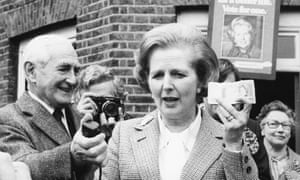
It takes a lot to be defeated twice over, ridiculed for years and still care enough to show up for your country, the majority of which has rejected you for a national leadership role. Rahul Gandhi continues to surprise us. He simply won’t give up. He just doesn’t turn cynical and walk away.
He keeps coming back with his empathy as well as his willingness to find viable solutions to pressing issues induced by the pandemic: an economy in doldrums, a huge migrant workers’ problem that’s slowly turned into a humanitarian crisis as well as transparency of the government’s Arogya Setu app being used to map Covid positive patients. Rahul Gandhi’s comeback is all the more conspicuous against the backdrop of Prime Minister Narendra Modi’s unwillingness to have a press conference
Rahul is ready to talk
Rahul Gandhi is the eternal unputdownable comeback kid. He has managed to hold the attention of the media by continuously participating in the process of finding answers to the problems that Covid has thrown at India. He has had two conversations with two economists par excellence, former RBI governor Raghuram Rajan and Nobel laureate Abhijit Banerjee. Add to this, the migrant aid pack that Sonia Gandhi offered, where the Congress party would have paid the train fare for every migrant labourer who wants to go home. This “masterstroke” has made the fiercest of critics of the Congress party applaud the Gandhis. The Gandhis are consciously and conspicuously placing themselves polar opposite to Narendra Modi. Whatever Modi is avoiding, the Gandhis are accepting and dealing squarely.
Right-wing editorials are claiming that Rahul Gandhi is trying to come off as an “intellectual”. This, for a man who till recently they caustically made fun of. But this perception is cracking because for the first time, the entire BJP PR machinery is being used to not make fun of Rahul Gandhi, but to discredit his interactions with the two economists by either calling the interaction a “repackaged Socialist snake oil” or by spinning fake news related to the guests. MoneyControl.com and News18 misquoted Abhijit Bannerjee as criticising UPA’s schemes, which the BJP had embraced. Banerjee had said no such thing.
Ending obsession with Modi
Then there’s Rahul Gandhi’s two press conferences (via Zoom). We got to see a visibly more calmer and zen Rahul Gandhi who is neither shaken nor stirred by the six-year-long vicious slander by the BJP or the media, which has more often than not dealt rather unfairly with him. He has significantly altered his behaviour from the Rahul of yore, who would either attack Modi with his ‘Chowkidar Chor hai’ jibe or give him a hug in Parliament and say that he loves the prime minister.
Rahul’s detachment from Modi is palpable when he urges the government to transfer direct cash to the poor, as envisaged in Congress’s NYAY scheme, by saying “Call it ‘nyay’ (justice) or call it by any other name but do it.”
Rahul, it appears, has specifically distanced himself from acts of political pettiness and his statements reflect a sense of political maturity: “We can defeat the virus if we fight it together, we lose if we fight with each other”. Even though he also unapologetically added that he does not agree with Prime Minister Narendra Modi on most things but wanted to offer “constructive suggestions”.
Gandhi’s well-directed tweets with suggestions to the government are now also being affirmed by experts.
Turning Aarogya to his advantage
While the BJP is in pathological denial of anything substantive that Rahul Gandhi or the two economists had to say, an ethical hacker had the government promptly take notice and admit to its mistake. French hacker Elliot Alderson on Twitter looked into the Aarogya Setu app and confirmed Rahul’s fear that it was nothing more than a “sophisticated surveillance system”. The app’s user agreement states that the data can be used in the future for purposes other than epidemic control if there is a legal requirement. The privacy policy of the app states that the data on the app may be shared with as many agencies as the government sees fit.
Alderson went on to confirm and tweeted to the government that “A security issue has been found in your app. The privacy of 90 million Indians is at stake.” He ended the tweet with a post script that read; “@Rahul Gandhi was right.”
Although the Modi government confirmed that there could be no security breach in the app, they thanked the ethical hacker on engaging with them. Alderson on the other hand has confirmed that some of the issues he reported were fixed in the app and that he did receive calls from the National Informatics Centre (NIC) and the Indian Computer Emergency Response Team (ICERT), both government bodies.
In fact the press note of Aarogya Setu thanked Alderson for engaging with them. “We thank the ethical hacker on engaging with us. We encourage any users who identify a vulnerability to inform us immediately.” Anderson, however, maintained that the app should “stop lying, stop denying”.
Rahul’s initial warning, as early as 12 February, foreboding the government of ignoring the contagion almost seems prophetic today. The BJP can go on to dismiss him but it’s getting harder for the party and the government to ignore Rahul in these Covid times.
